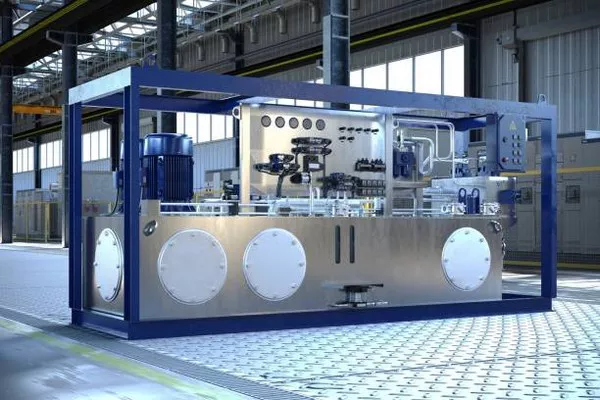Air compressors play a crucial role in various industries, providing a versatile source of power for tools and equipment. Among the different types of air compressors, the direct drive air compressor stands out for its efficiency and compact design. In this article, we will delve into the mechanics, advantages, and applications of direct drive air compressors.
I. Overview of Direct Drive Air Compressors:
Direct drive air compressors are a type of rotary screw compressor, a popular choice in industrial settings for their reliability and consistent performance. Unlike belt-driven compressors, direct drive compressors have a motor directly coupled to the compressor element, eliminating the need for belts and pulleys.
II. How Direct Drive Compressors Work:
Direct drive air compressors operate on the principle of converting mechanical energy into compressed air. The process begins with an electric motor that drives the air compressor’s screw element. The motor and the screw element are directly connected, resulting in a more efficient transfer of energy.
The screw element consists of two rotors – the male and female rotors – that intermesh to compress the air. As the rotors rotate, the air is drawn in and compressed, and then discharged at a higher pressure. This continuous process ensures a steady supply of compressed air for various applications.
III. Advantages of Direct Drive Air Compressors:
Efficiency: Direct drive compressors are known for their high efficiency due to the direct coupling of the motor and screw element. This design minimizes energy losses that may occur with belt-driven systems, resulting in a more direct and efficient power transfer.
Compact Design: The absence of belts and pulleys contributes to a more compact and space-efficient design. Direct drive compressors are often smaller and lighter than their belt-driven counterparts, making them suitable for applications with limited space.
Reduced Maintenance: With fewer components involved, direct drive air compressors generally have lower maintenance requirements. The elimination of belts reduces the risk of wear and tear, resulting in longer equipment life and reduced downtime.
Quiet Operation: Direct drive compressors often operate with less noise compared to belt-driven models. The direct coupling reduces vibration and noise associated with belt systems, making them suitable for environments where noise levels need to be minimized.
Improved Power Transmission: The direct connection between the motor and screw element ensures a more direct and reliable power transmission. This can lead to increased overall system efficiency and better performance.
IV. Applications of Direct Drive Air Compressors:
Direct drive air compressors find applications across various industries due to their efficiency and versatility. Some common applications include:
Automotive Industry: Direct drive compressors are used for pneumatic tools, spray painting, and other air-powered applications in automotive repair shops and manufacturing facilities.
Construction Sites: Compact and portable direct drive compressors are ideal for construction sites, powering tools such as pneumatic nail guns, jackhammers, and concrete breakers.
Manufacturing Plants: In manufacturing plants, direct drive air compressors are employed for a wide range of applications, including powering pneumatic machinery and providing a clean and reliable source of compressed air.
Woodworking Shops: Woodworking shops utilize direct drive compressors for tasks such as operating pneumatic nailers, sanders, and other air-powered tools.
V. Considerations When Choosing a Direct Drive Air Compressor:
Capacity and Pressure Requirements: Assess the specific needs of your applications, considering both the required air pressure and volume (CFM – Cubic Feet per Minute).
Duty Cycle: Understand the duty cycle of the compressor, which refers to the percentage of time the compressor can operate within a given time period. This is crucial for applications with continuous air demand.
Power Source: Direct drive compressors are typically electrically powered. Ensure that the available power source in your facility matches the requirements of the compressor.
Portability and Space Constraints: Consider the space available for installation and whether portability is a crucial factor. Direct drive compressors are often more compact and portable than belt-driven models.
Noise Levels: If noise is a concern in your working environment, choose a direct drive compressor known for its quiet operation.
See also How Do Oil Free Air Compressors Work
Conclusion:
Direct drive air compressors have emerged as a reliable and efficient solution for various industrial applications. Their direct coupling design, compact form factor, and reduced maintenance requirements make them a popular choice among professionals in different sectors. Understanding the mechanics and advantages of direct drive compressors allows businesses to make informed decisions when selecting the right equipment for their specific needs, ensuring optimal performance and productivity in their operations.

